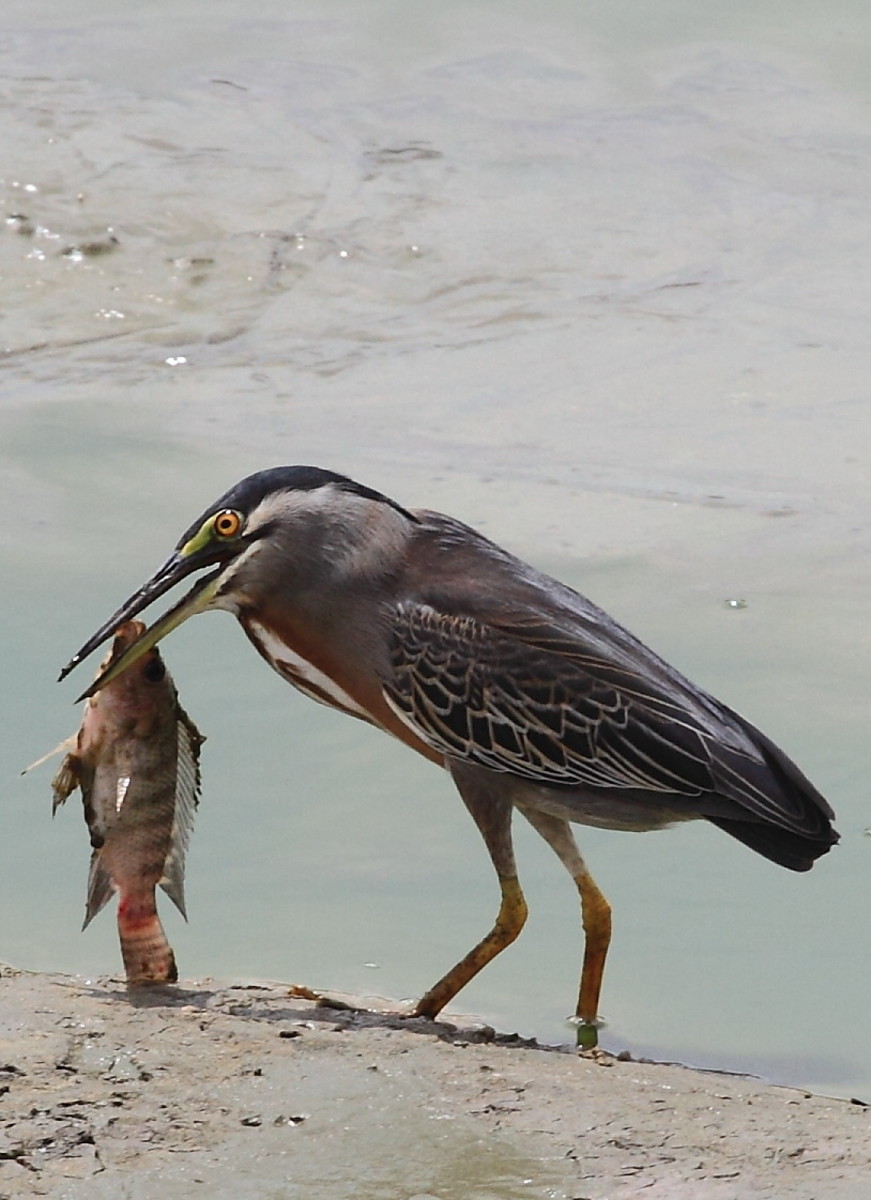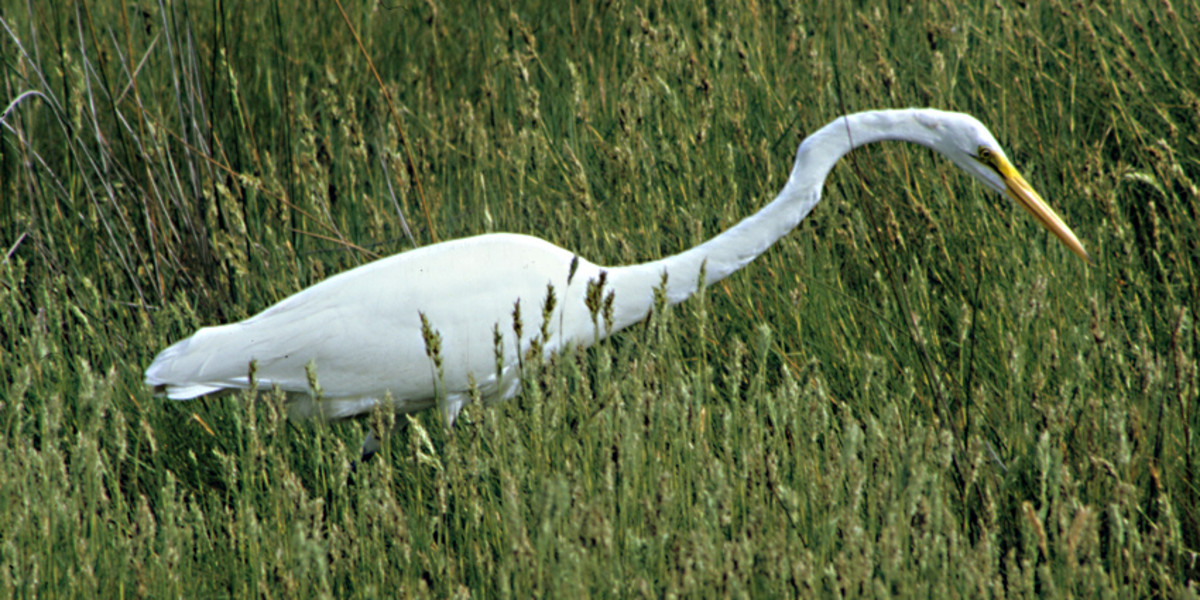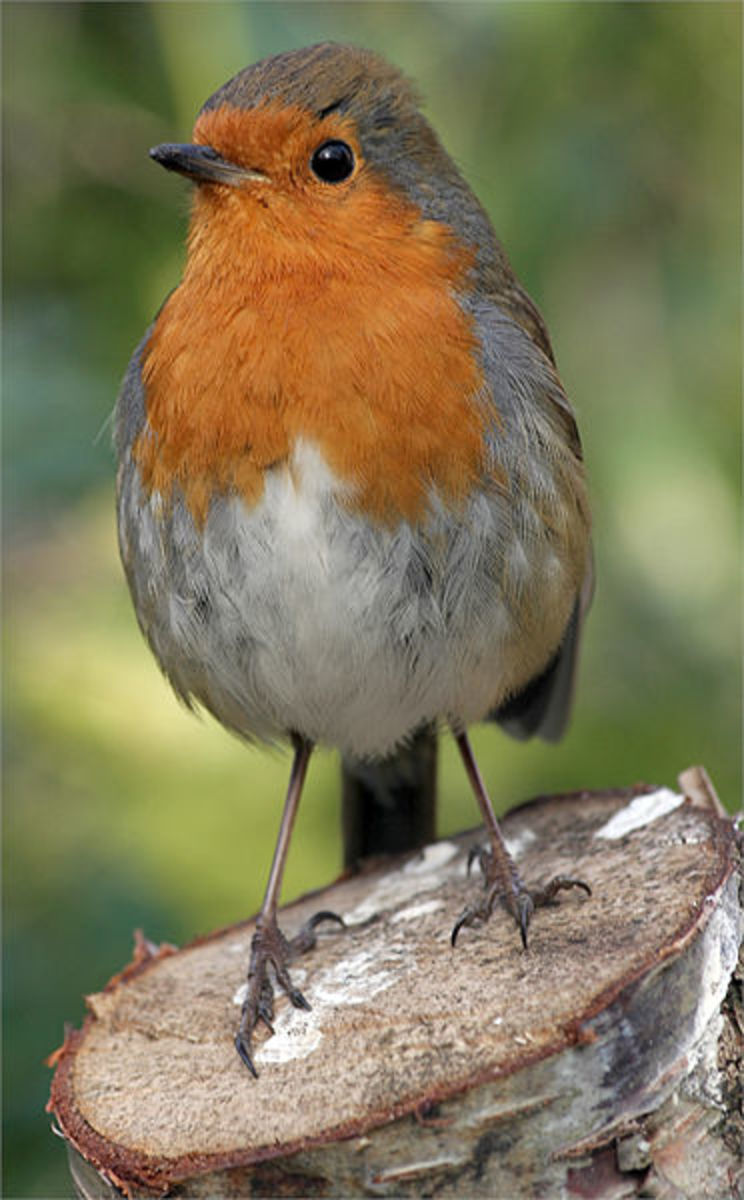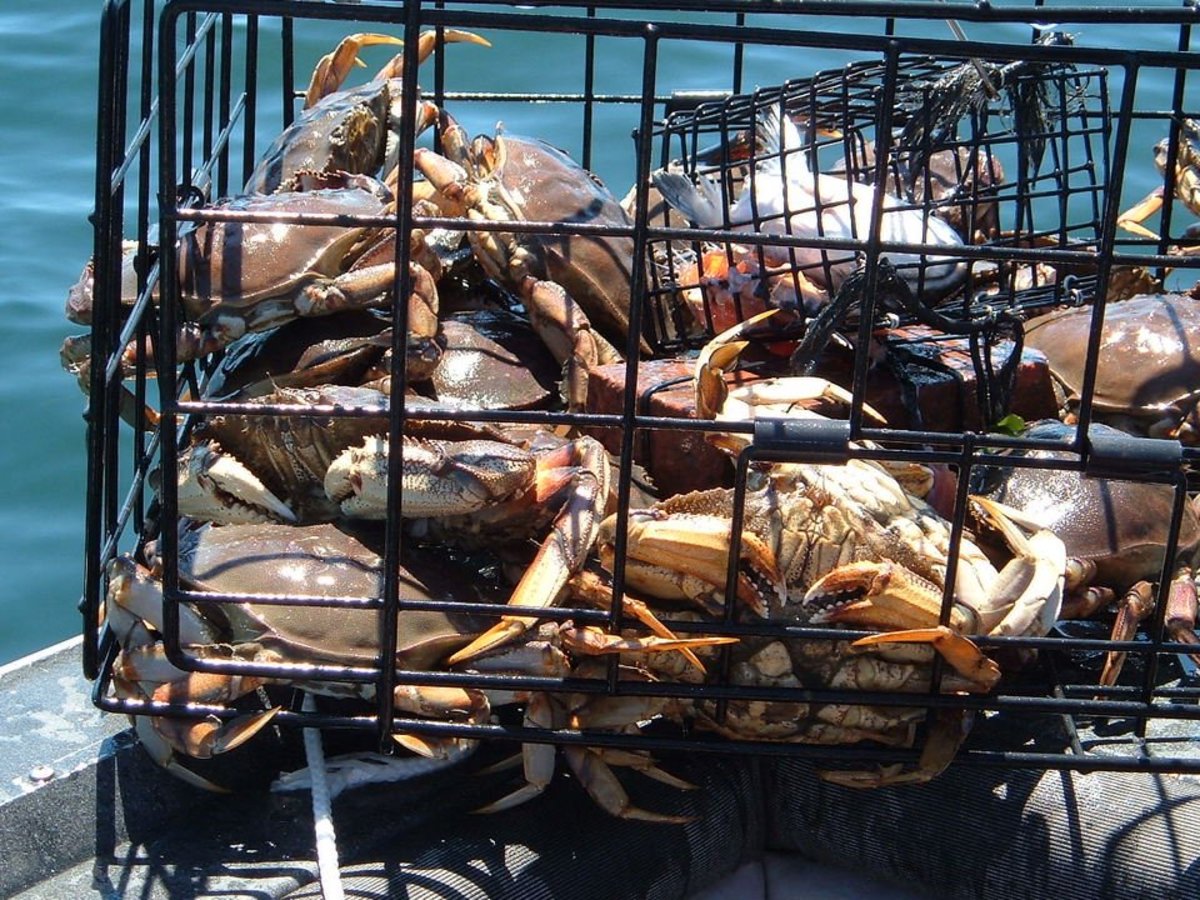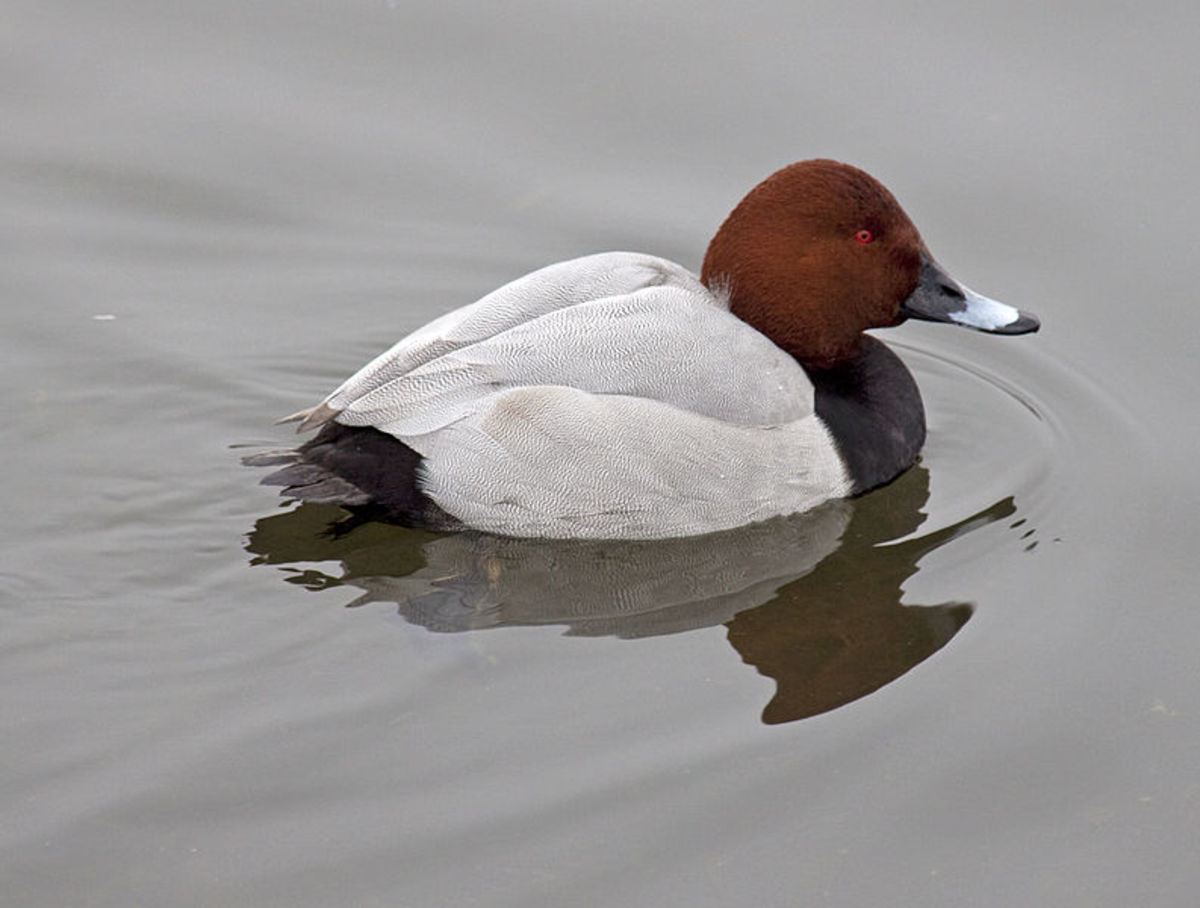The Complete Guide to British Birds: Gannets, Cormorants and Herons
The Northern Gannet in Flight
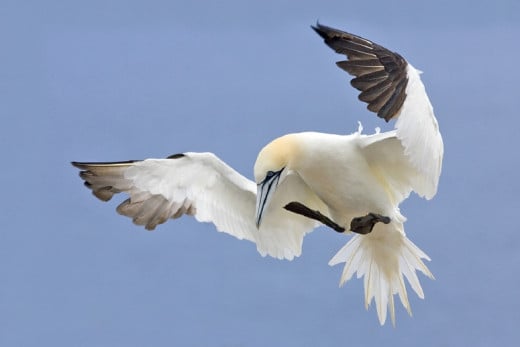
Paired For Life
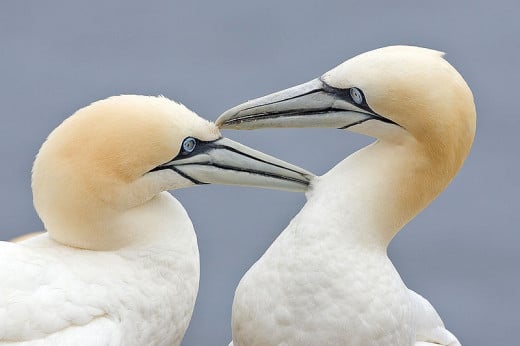
Northern Gannet
When crowds of gannets nest in an offshore colony, or gannetry as it’s often called; they are undoubtedly at their most aggressive. The nests are evenly spaced along sloping rocks or wide ledges, just beyond pecking distance from each other. If an adult should suffer the misfortune of landing in the wrong place, or if a chick should happen to stray from its nest, then the offender is mercilessly attacked and even on occasion pecked to death.
A typical gannetry may contain as many as 60,000 pairs of birds. The air above a colony is often thick with birds, with some of them hanging motionlessly in the air, using the strong updraughts to hold their position. They boast a pretty impressive wingspan, measuring as much as 6 feet. Their calls are loud, bark like ‘urrahs’ and ‘arrahs’ and I can assure you that the collective sound of many thousands of gannets in a large colony is virtually deafening, it’s one of the few times that bird watching has left me with a ringing in my ears.
Being social birds, gannet pairs often indulge in a peculiar greeting ceremony known as ‘mutual fencing’ where the birds will literally fence each with other in order to re-establish a pair bond. They also use a bowing display as a territorial defensive display and a ‘skypointing’ display is used to inform the others that they intend to take to flight.
Gannets mostly eat fish, and watching them catch it is one of the most fascinating and entertaining experiences you could possibly have as a birdwatcher. They take to the air, rising as high as 100 feet in some cases, before plunging almost vertically out of the sky. They achieve remarkable speed through sweeping back their wings, essentially becoming a white, feathery arrow.
The gannet’s nest consists of large heaps of seaweed and other plants, and materials such as feathers. The clutch is nearly always just a single egg; two egg clutches do occur, but are very rare. The egg is rather elongated with an irregular chalky coating, so thin in places that the pale blue shell can be seen clearly through it. The parents share their incubating duties, for which they use their thin overlapping, webbed feet in a not too dissimilar way to a penguin; the chicks generally hatch after about 45 days.
Young gannets take several years to fully mature, and with enough practice and observation, you can age and bird by its appearance alone. For example, a newly fledged gannet has an all dark plumage with white speckles. With each passing year, they gradually develop the all white plumage of the adults; it’s a process that takes five to six years.
Nature's Dive-Bombers
Drying Off
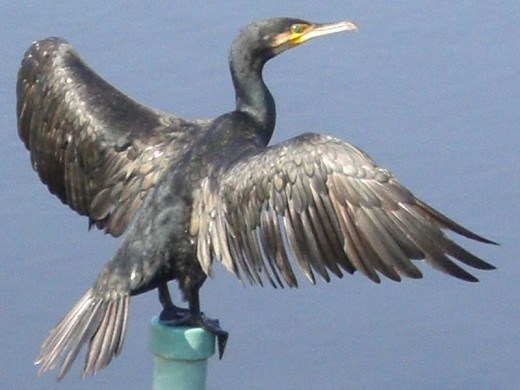
Fishing With Cormorants in China
Cormorant
Fishermen have tended to persecute the cormorant in the unfair belief, that it’s combination of fishing skill and large appetite depleted stocks, especially in rivers, where it’s said to favour trout, young salmon and eels. Researchers show, however, that cormorants seem to favour flatfish and eels, with marketable fish making up only a small portion of its diet. Enterprising Japanese and Chinese fishermen make use of the cormorant’s expertise by training one species to dive and catch fish for them.
Cormorants are members of the pelican family, with all four of its toes on each foot completely webbed, which aids with swimming and pursuing fish under water. After emerging from the waves, they will usually take to perching on a rock or jetty with its wings outstretched, apparently drying them. It seems mysterious though, that a bird which spends so much time in the sea should not have evolved efficient waterproofing like other seabirds.
Some cormorant colonies have hundreds, or even thousands of birds. They build large nests on cliff tops and rocky islets, sometimes by rivers and lakes and even on occasion elect to nest in trees. They typically lay three to four eggs, which take about a month to hatch, and are fed once a day by each parent with regurgitated food.
Keen and Alert
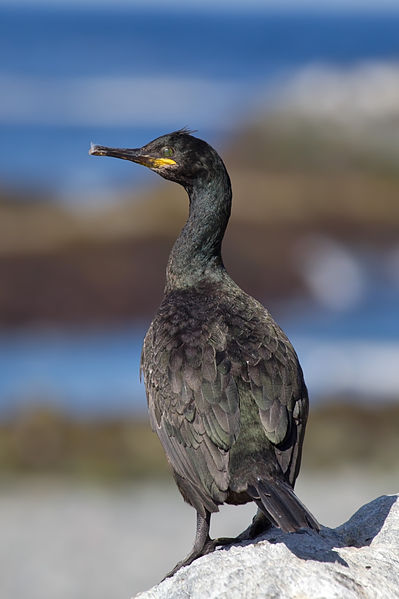
Shag
Shags are notably vigorous defenders of their nests and young, refusing to leave the nest during attacks and thrusting their beaks forward menacingly at intruders. Only the most determined of enemies persist in attacking an enraged shag. In a similar way to the cormorant, after emerging from the sea, they will perch on a rock and spread their wings out to dry, although unlike the cormorant they will avoid perching on man-made objects.
They build a nest of sticks and seaweed with a lining of grass. Their clutch size varies from one to six, with the eggs being pale blue with a chalky white coating, rather like those of its larger cousin, the cormorant. The chicks hatch out after a month, and remain within the vicinity of the nest for another seven to eight weeks, taking regular food from both parents. By this time, they can probably fly, but may still return to the nest for another three weeks or longer.
During the first part of the last century, the shag increased greatly in number around British coasts and is still doing so in some areas. At present there seems to be about four times as many shags than cormorants. This is all the more remarkable because shags are notoriously difficult to count because their nests are not particularly accessible. The most likely cause of their population boom is a marked decrease in its persecution by man, but on occasion still, many shags die as a result of a poison produced by a tiny pinkish sea creature so numerous that it can colour the water in a ‘red tide.’
Tall and Proud
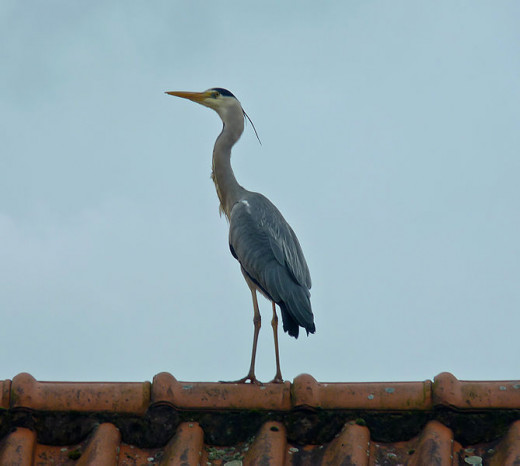
Catching Dinner
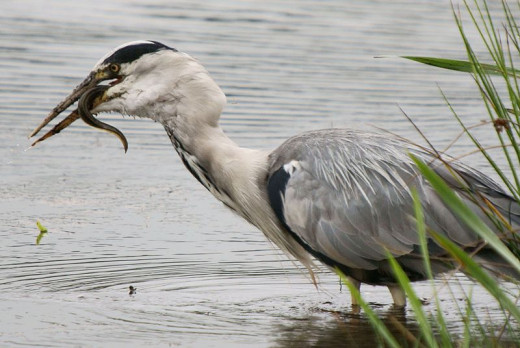
Grey Heron
Poised, alert and motionless in or beside shallow water, the watchful grey heron waits patiently for a fish or some other small creature to come within range of its dagger sharp bill. Then it strikes hard and fast, stabbing its prey and swallowing it whole. Other than fish, grey herons readily take small mammals and amphibians, reptiles, insects and even other birds on occasion, notably ducklings and young coots and moorhens. The grey heron population of Britain normally fluctuates between 4000 and 4500 pairs, but often experiences a sharp fall after a particularly severe winter when frozen rivers and lakes deprive the birds of their main food.
The grey heron possesses a rather long neck, and also long legs with no webbing on its feet whatsoever. Its black crested white head and dark streaks on the neck, help to distinguish it from the Eurasian crane. The sexes are totally alike. In flight, the grey heron draws its neck back and arches its broad and rounded wings. It has a rather slow, ponderous and methodical flight action with very slow wing beats. The legs incidentally are extended well back beyond the tail.
Like the shag, the grey heron is a vigorous and determined defender of its nest. Whenever it feels threatened it raises its crest and thrusts out its breast plumage in an attempt to appear bigger. During courtship on the other hand, the male will stretch his neck up and then lower it over his back. Bill snapping and a variety of calls are also part of the courtship ritual.
Grey herons nest in colonies or heronries, building nests in large trees or bushes, in reed beds or on cliff edges. The nest is a large structure of sticks and twigs with a shallow, saucer shaped hollow in the top. The same nest is used year after year, and as a consequence grows in size until its several feet across. The female alone, builds the nest and lays three, four or five eggs that are pale greenish-blue in colour.
The chicks which emerge are clad in long, sparse down, bristly on the crown, giving them a rather comical crest like effect. Both parents take it in turns to feed them regurgitated food; incidentally grey heron chicks have to be among the nosiest birds you’ll ever hear during the breeding season, with their incessant, begging ‘agagagagagagag’ call.
The Eurasian Bittern
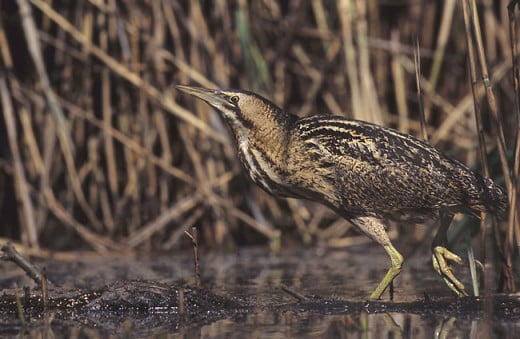
What Happens When a Bittern Feels Threatened
Eurasian Bittern
At the beginning of the 19th century, Eurasian bitterns were regarded as a table delicacy and special shoots were organised in the fens and broad-lands of eastern England, as well as in Wales, southern Scotland and Ireland. At the time the bird was quite common in those areas. By the middle of that century, however, the population had collapsed as a result of over-hunting, the activities of egg collectors and drainage of their marshland habitat. The last breeding pair was observed and recovery in Norfolk in 1868. Then at the start of the 20th century, Eurasian bitterns from the Continent began to slowly recolonise Britain, with breeding recommencing in 1911. Despite some severe winters, the bittern population steadily increased, reaching a peak in the 1950s. Since then, unfortunately a further decline has set, because of further destruction of its precious marshland habitat.
The Eurasian bittern’s call is a deep, resonant ‘boom’, which may be heard from more than a mile away. Its generic name Botaurus is derived from the Latin boatum tauri, ‘the bellowing of a bull,’ and in the spring its call does often resemble the distant lowing of a cow.
In the breeding season, four to six olive brown eggs are laid at two to three day intervals and are incubated solely by the female. The male meanwhile, plays little part in raising the chicks and will often go off and mate with other females.
More to follow...


